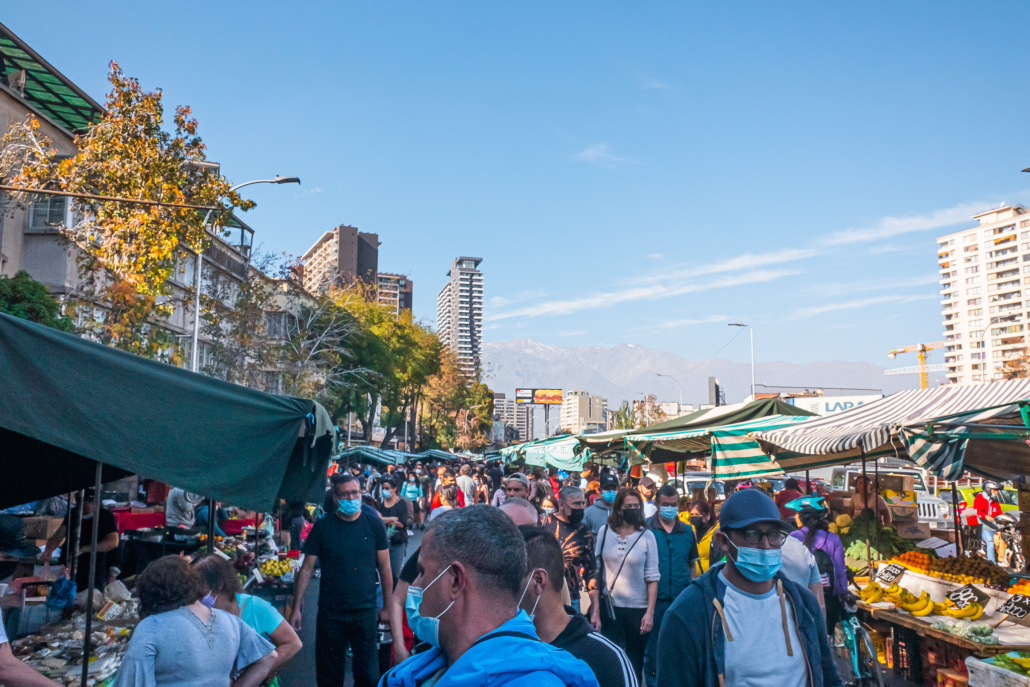Everything You Need to Know About Poverty in Chile
 Chile is located on the west side of South America and is an area rich in natural resources and minerals, like copper. These resources make up a large part of the Chilean economy, making the country a relatively wealthy one – however, the wealth is not equally distributed, leaving many people living in poverty. ‘Poverty’ equates to different things in different countries; poverty in Chile includes people who struggle to afford enough food for survival and people who have to spend the majority of their income on food.
Chile is located on the west side of South America and is an area rich in natural resources and minerals, like copper. These resources make up a large part of the Chilean economy, making the country a relatively wealthy one – however, the wealth is not equally distributed, leaving many people living in poverty. ‘Poverty’ equates to different things in different countries; poverty in Chile includes people who struggle to afford enough food for survival and people who have to spend the majority of their income on food.
Economic Inequality and Poverty in Chile
Of all the world’s most industrialized countries, Chile has one of the highest levels of economic inequality. The wealth inequality has often been so extreme that in 2006, for example, the richest 20% of the population was earning 10 times more than the poorest 20%, leaving a large divide between people living comfortably and people living in poverty.
As so much of the country’s wealth comes from the copper industry, the economic growth does not benefit everyone, as people in rural or marginalized areas lack access to high-paying mining jobs or industrial resources. Without these roles, many citizens end up struggling to deal with the rising cost of living, and cannot easily break out of the poverty cycle.
Inequalities in Education and Work
Children face the impacts of gender and economic inequality as soon as they start school. People in different education systems have noticed that teachers in Chile often encourage boys to focus on math and science, while girls do not often access these topics. This leads to the underrepresentation of Chilean women in STEM subjects and professional roles.
The quality of a child’s education also depends on whether their family can afford a private education, creating another economic divide. This means children from richer families are much more likely to get a better education, better grades and a better job in the future than their peers with a lower socioeconomic status. Additionally, children in rural areas without internet access miss out on a lot of key learning – this was a big issue during COVID-19 lockdowns when all learning occurred online, leaving a lot of children unable to access the lessons they needed.
Student-led peaceful protests are a huge factor in changing the education systems in Chile: in 2019, high school students convinced the government to give discounts on public transport to school, and university students achieved free tuition for almost half the country. Many teachers and other workers in the education sector are also battling to give students better opportunities and more equality in their learning.
Infrastructure
Poor infrastructure in rural areas is a major issue in reducing poverty in Chile. While most urban areas are well equipped, there are many rural areas that struggle to access clean water, reliable electricity, internet connection and good health care. These areas are therefore separated from the modern economy, and the citizens have to travel longer distances and pay more money for any kind of medical help. This disproportionately affects poorer families who are struggling with the cost of living and a lack of resources.
Improved transport infrastructure could have a big impact, by removing geographic barriers to economic activities. When travel is easier, businesses grow and more resources become available to people all over the country. As it stands, a lot of rural areas have challenges accessing these resources and end up in a poverty cycle.
Progress Addressing Poverty in Chile
Over recent years, wages have been increasing and poverty has been decreasing, with GDP growth at 2.5% in 2024. The economic conditions of Chile are steadily improving, with help from organizations like the World Bank Group (WBG), which has supported the country’s development for more than 75 years with loans, insurance and technology. For example, the WBG is currently working on a project providing universal health care to Chileans, improving the efficiency of reliable medical care for the whole country. Families in rural areas often struggle to access hospitals and have to travel long distances only to receive very basic support. This project aims to relieve this issue and help more than half of Chile’s population by 2027.
However, poverty in Chile is still prevalent. The Chilean President, Gabriel Boric, stated, “We have reduced income poverty and multidimensional poverty to historic levels…but there are still so many people living in poverty. This is good news, but it is not news to celebrate, because the poor have to come first.” The government, as well as other global organizations, are still constantly and actively fighting to improve conditions for everyone suffering from poverty in Chile and begin to close the gap between the richest and poorest parts of the country.
– Maisy Brown
Maisy is based in Leeds, UK and focuses on Technology and Celebs for The Borgen Project.
Photo: Flickr
